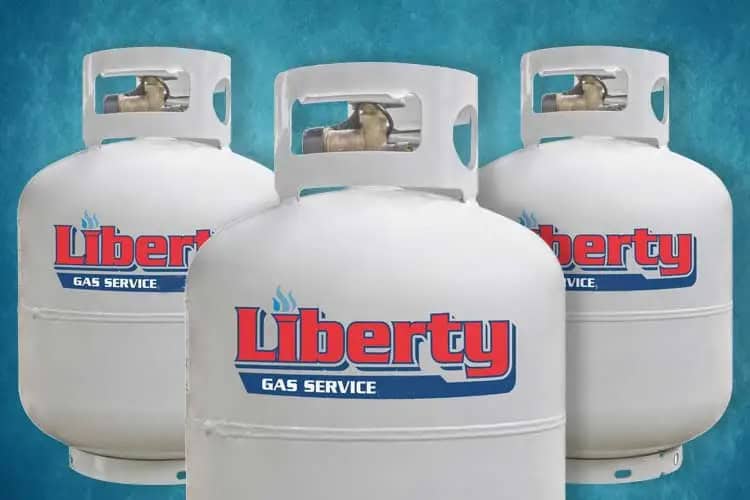How familiar are you with the workings of your propane tank? How about the safety features and regulations that go into keeping your family safe? We’re guessing – not very! But no worry – that is where we come in! Liberty Gas makes sure that your propane tank complies with the latest regulations as your trusted full-service propane provider.
Not only does a tank hold your fuel, but it has a variety of standard safety features to ensure safe operation. It is always good to know a bit about the equipment around your home, here are the basic facts.
(By the way – you’re welcome in advance for helping you sound really smart when dropping some knowledge the next time you’re sitting around the fire pit with friends!)
Basic Propane Tank Requirements
Several things that customers should know about their propane tank are easily seen without having to know the technicalities of propane tanks and the regulations tanks are subject to. Here are some simple tank related safety and compliance items without the technical details.
- Manufacturers Nameplate – Containers without nameplates are not permitted to be filled
- Tank Paint Color – Propane tanks are required to be painted a reflective color
- Regulator Position – Propane regulator must be covered and protected or pointed vertically down
- Level Placement – The tank must be placed above the soil and on level ground
Propane Tanks Standards
Propane tanks come in many different sizes and are manufactured by many different companies around the globe. These tank manufacturers are required to adhere to the ASME (American Society of Mechanical Engineers) rules for construction of propane pressure vessels intended for use within the United States. The rules in the U.S. are generally more stringent than in other countries with regard to the fabrication of LP Gas pressure vessels. Rules governing the installation of propane tanks are enforced at the national, state, and local levels ensuring all applicable codes and regulations are adhered to for the safety and protection of consumers and the general public. Similarly, propane tank design and appurtenance engineering is undertaken with safety, protection, service and efficiency in mind.
Propane Tank Parts
The visible parts of the propane tank play a vital role in the usability and serviceability of the gas tank. All of these parts are attached to the tank at the manufacturer with threaded fittings. These specialized propane tank parts consist of the following replaceable fittings and connections.
- Fill Valve – Point at which hose from delivery truck is attached to the tank for re-fueling
- Relief Valve – Safety relief mechanism designed to vent propane in an over-pressure situation
- Service Valve – Point at which propane is converted to vapor for use with appliance(s)
- Fixed Liquid Level Gauge – Indicates the level of propane is at or above 80% capacity
- Float Gauge– Presents a visible indication of the propane volume in the tank. Also called a dial gauge
- Vapor Return Valve – Connection used during propane delivery to remove excess tank pressure
- Liquid Withdrawal Valve – Used to withdraw liquid propane from the tank
Have further questions about the “how’s” and “what’s” of your propane tank? Give us a call today and we’ll be happy to explain. Liberty Gas is your trusted source for all propane services!








